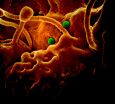(Press-News.org) Two different family-based therapies are both effective at combating anorexia nervosa in teenagers, according to the largest study ever to compare two such treatments for the life-threatening eating disorder.
The findings, from a multisite study led by researchers at the Stanford University School of Medicine, add to a growing body of evidence supporting the value of parents' involvement in anorexia treatment.
The results, which will be published Sept. 24 in JAMA Psychiatry, follow prior Stanford research that found a family-based approach was twice as effective as individual therapy for treating adolescent anorexia patients.
"The take-away message for parents is that, first, there is good treatment available for their child who is struggling with anorexia," said Stewart Agras, MD, professor emeritus of psychiatry and behavioral sciences at Stanford and the lead author of the new study. "Second, the preferred treatment is family-based therapy in which parents help their child regain weight."
Anorexia nervosa patients suffer distorted body image, erroneously believing they are overweight. They overexercise and refuse to eat enough to maintain a healthy body weight. The disease, which affects about 0.5 to 0.7 percent of adolescent girls, has one of the highest suicide rates of any psychiatric disorder.
Involving, not blaming, families
"For a long time, people blamed families for causing anorexia and thought they should be left out of treatment," said James Lock, MD, PhD, professor of psychiatry and behavioral sciences at Stanford and a co-author of the study. "But this study suggests that, however you involve them, families can be useful, and that more focused family treatment works faster and more cost-effectively for most patients." Lock directs the Comprehensive Eating Disorders Program at Lucile Packard Children's Hospital Stanford.
The study, a randomized, controlled trial of 164 patients conducted at six sites in the United States and Canada, compared two forms of anorexia treatment that involved regular therapy sessions with adolescents and their families. One approach focused on teaching parents to help their children eat normally and regain weight at home. The other therapy attempted to resolve difficult family dynamics. Both therapies produced similar rates of recovery from anorexia, but patients treated with the first approach gained weight faster and needed less hospitalization, the study found.
The patients were ages 12-18 and had been ill with anorexia for an average of 13.5 months. At the start of the study, all patients had body weights of at least 75 percent of what was considered ideal, meaning that physicians considered it safe for them to receive outpatient treatment. Nearly 90 percent of the patients were female. All had at least one parent who agreed to participate in treatment, which consisted of 16 one-hour therapy sessions over a nine-month period. The success of the treatments was evaluated at the end of the nine-month period and again a year later.
In both forms of family therapy, patients experienced similar weight gain by the end of treatment and at the one-year follow-up. The therapy that focused on teaching parents to help their children eat normally again was about half as expensive as the family-dynamics approach, mostly because patients spent less time in the hospital. However, the therapy that focused on family dynamics was more effective for one specific sub-group of patients: those who also had severe symptoms of obsessive-compulsive disorder.
Hope for long-term remission
Lock, who has conducted several prior studies of the therapy that teaches parents to help their children eat normally again, said he thinks this approach works by interrupting the patient's behaviors that are supporting erroneous thinking patterns. "We think that parents are able to disrupt the maintaining behaviors of anorexia long enough that the thoughts and cognitions that go with the disease diminish," he said. "At that point, the cognitions themselves have very little staying power."
Addressing anorexia during the teenage years offers the best hope for long-term remission, Agras said. "The longer anorexia goes on, the more difficult it is to treat," he said. "A great many people live chronically restricted lives because of this disease — they plan their days around undereating and overexercise — and quite a few die. The idea is to treat the disorder in adolescence to prevent more adults from becoming anorexic."
INFORMATION:
Other Stanford co-authors of the study are statisticians Susan Bryson, MS, and Booil Jo, PhD, associate professor of psychiatry and behavioral sciences. Lock is a member of the Child Health Research Institute at Stanford.
The study's coordinating center was at Stanford, and the other intervention sites were at Weill Cornell Medical College in New York City, Sheppard-Pratt Medical Center in Baltimore, the University of California-San Diego, the University of Toronto and Washington University in St. Louis.
The study was funded by the National Institute of Mental Health (grants 1U01MH076290, MH076254, MH076251, MH076250, MH076255 and MH076252).
Agras and Lock receive royalties from Oxford University Press for contributions to a textbook about eating disorders. Lock also receives royalties from Guildford Press for books he has written about family-based treatment for anorexia nervosa and bulimia nervosa, and payments from the Training Institute for Child and Adolescent Eating Disorders, where he is a faculty member who trains other clinicians in evidence-based treatment methods for eating disorders.
Information about Stanford's Department of Psychiatry and Behavioral Sciences, which also supported the work, is available at http://psychiatry.stanford.edu/.
Print media contact: Erin Digitale (650) 724-9175 (digitale@stanford.edu)
Broadcast media contact: Margarita Gallardo at (650) 723-7897 (mjgallardo@stanford.edu)
The Stanford University School of Medicine consistently ranks among the nation's top medical schools, integrating research, medical education, patient care and community service. For more news about the school, please visit http://mednews.stanford.edu. The medical school is part of Stanford Medicine, which includes Stanford Health Care and Lucile Packard Children's Hospital Stanford. For information about all three, please visit http://med.stanford.edu.
Stanford Children's Health, with Lucile Packard Children's Hospital Stanford at its core, is an internationally recognized leader in world-class, nurturing care and extraordinary outcomes in every pediatric and obstetric specialty from the routine to rare, for every child and pregnant woman. Together with our Stanford Medicine physicians, nurses, and staff, we deliver this innovative care and research through partnerships, collaborations, outreach, specialty clinics and primary care practices at more than 100 locations in the U.S. western region. As a non-profit, we are committed to supporting our community – from caring for uninsured or underinsured kids, homeless teens and pregnant moms, to helping re-establish school nurse positions in local schools. Learn more about our full range of preeminent programs and network of care at stanfordchildrens.org, and on our Healthier, Happy Lives blog. Join us on Facebook, Twitter, LinkedIn and YouTube.
Lucile Packard Children's Hospital Stanford is the heart of Stanford Children's Health, and is one of the nation's top hospitals for the care of children and expectant mothers. For a decade, we have received the highest specialty rankings of any Northern California children's hospital, according to U.S. News & World Report's 2014-15 Best Children's Hospitals survey, and are the only hospital in Northern California to receive the national 2013 Leapfrog Group Top Children's Hospital award for quality and patient care safety. Discover more at stanfordchildrens.org
Family-based therapies can treat anorexia in teens, Stanford/Packard study finds
2014-09-24
ELSE PRESS RELEASES FROM THIS DATE:
NIH study supports camels as primary source of MERS-CoV transmission
2014-09-24
National Institutes of Health (NIH) and Colorado State University (CSU) scientists have provided experimental evidence supporting dromedary camels as the primary reservoir, or carrier, of Middle East respiratory syndrome coronavirus (MERS-CoV). The study, designed by scientists from CSU and NIH's National Institute of Allergy and Infectious Diseases, involved three healthy camels exposed through the eyes, nose and throat to MERS-CoV isolated from a patient. Each camel developed a mild upper respiratory tract infection consistent with what scientists have observed throughout ...
When David beats Goliath
2014-09-24
Body size has long been recognized to play a key role in shaping species interactions, with larger species usually winning conflicts with their smaller counterparts. But Queen's University biologist Paul Martin has found that occasionally, small species of birds can dominate larger species during aggressive interactions, particularly when they interact with distantly related species.
The new findings provide evidence that the evolution of certain traits can allow species to overcome the disadvantage of a smaller size.
"We want to understand why species live where they ...
First mouse model for ALS dementia
2014-09-24
CHICAGO --- The first animal model for ALS dementia, a form of ALS that also damages the brain, has been developed by Northwestern Medicine® scientists. The advance will allow researchers to directly see the brains of living mice, under anesthesia, at the microscopic level. This will allow direct monitoring of test drugs to determine if they work.
This is one of the latest research findings since the ALS Ice Bucket Challenge heightened interest in the disease and the need for expanded research and funding.
"This new model will allow rapid testing and direct monitoring ...
Findings give hope to plant extract as possible lupus treatment
2014-09-24
HOUSTON, Sept. 24, 2014 – New findings by a biomedical engineer and his team at the University of Houston (UH) raise hope for a new class of drugs to treat lupus that may not include the long list of adverse risks and side effects often associated with current treatments for this disease.
Lupus, or systemic lupus erythematosus, is a progressive, degenerative disease in which the immune system turns against itself, attacking a person's healthy tissue, cells and organs. Symptoms range from debilitating pain and fatigue to organ failure and a host of other impairments. ...
Captive whooping cranes released into the wild
2014-09-24
NECEDAH, Wis. – Four whooping crane chicks raised in captivity began their integration into the wild Saturday as part of the continuing effort to increase the wild population of this endangered species.
The cranes, hatched and raised by their parents at the U.S. Geological Survey's Patuxent Wildlife Research Center in Laurel, Maryland, were released on the U.S. Fish and Wildlife Service's Necedah National Wildlife Refuge in Wisconsin.
The chicks, about six-months old, are part of an experimental rearing and release method referred to as "parent-rearing." The parent-reared ...
NASA sees System 98W become Tropical Depression Kammuri
2014-09-24
Strong thunderstorms around the center of circulation in tropical low pressure System 98W were seen on infrared satellite imagery and were a clue to forecasters that the storm was intensifying. Early on Sept. 24, the storm intensified into Tropical Depression Kammuri far north of Guam.
NASA's Aqua satellite passed over Tropical Depression Kammuri on Sept. 24 at 12:23 a.m. EDT. Kammuri is a large storm and strong thunderstorms covered a long area within the somewhat elongated circulation. The circulation center was near the western edge of the massive extent of clouds. ...
Arabic tweets point to US influence as fuel for anti-Americanism
2014-09-24
An analysis of millions of Arabic-language tweets confirms high levels of anti-Americanism there, provides new and interesting information about attitudes in the Middle East toward particular U.S. actions, and charts a path for using Twitter to measure public sentiment in ways opinion polls cannot.
The findings also highlight policy challenges — and opportunities — for the United States in the Middle East, said Amaney Jamal, a professor of politics at Princeton University who conducted the research with colleagues at Princeton and Harvard University.
"Can the U.S. ...
Better information about prenatal testing leads to fewer tests
2014-09-24
A clinical trial led by UC San Francisco has found that when pregnant women are educated about their choices on prenatal genetic testing, the number of tests actually drops, even when the tests are offered with no out-of-pocket costs.
The findings underscore the need for clear information on all prenatal testing options and their possible outcomes, including the option of no testing, before pregnant women decide whether or not to have genetic testing, the authors said.
The study also suggests that some women may have undergone prenatal screening for Down syndrome ...
'Skin-like' device monitors cardiovascular and skin health
2014-09-24
A new wearable medical device can quickly alert a person if they are having cardiovascular trouble or if it's simply time to put on some skin moisturizer, reports a Northwestern University and University of Illinois at Urbana-Champaign study.
The small device, approximately five centimeters square, can be placed directly on the skin and worn 24/7 for around-the-clock health monitoring. The wireless technology uses thousands of tiny liquid crystals on a flexible substrate to sense heat. When the device turns color, the wearer knows something is awry.
"Our device is mechanically ...
Eyeless Mexican cavefish eliminate circadian rhythm to save energy
2014-09-24
Eyeless Mexican cavefish show no metabolic circadian rhythm in either light and dark or constant dark conditions, according to a study published September 24, 2014 in the open-access journal PLOS ONE by Damian Moran from Lund University, Sweden, and colleagues.
The Mexican tetra fish has two variants, a fully-eyed fish living close to the surface and a blind, deep water, cave-dwelling fish. Scientists in this study used these two fish to study evolutionary adaptation in fish residing in near or total darkness. The two fish types experience differences in daily light exposure, ...




